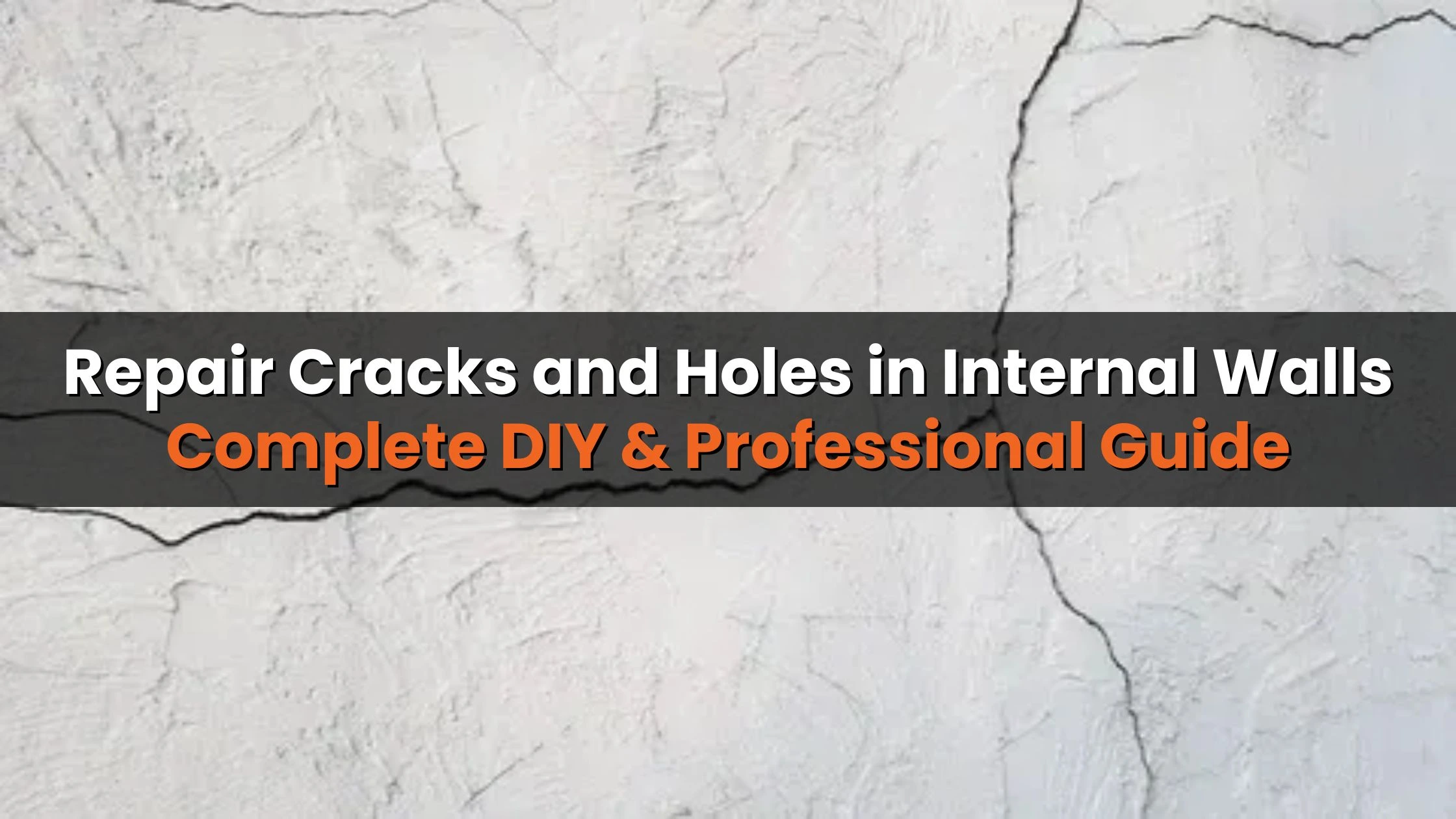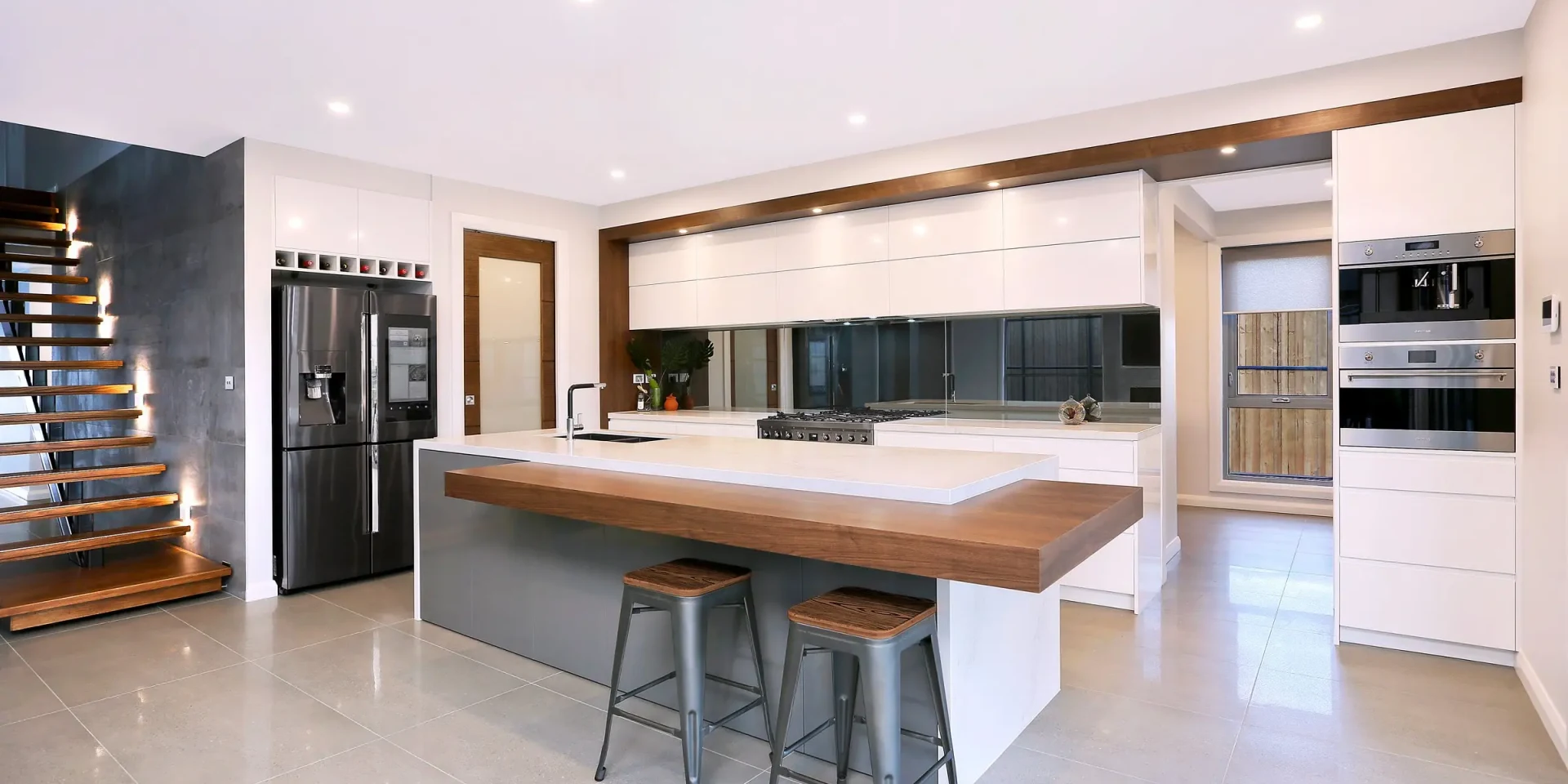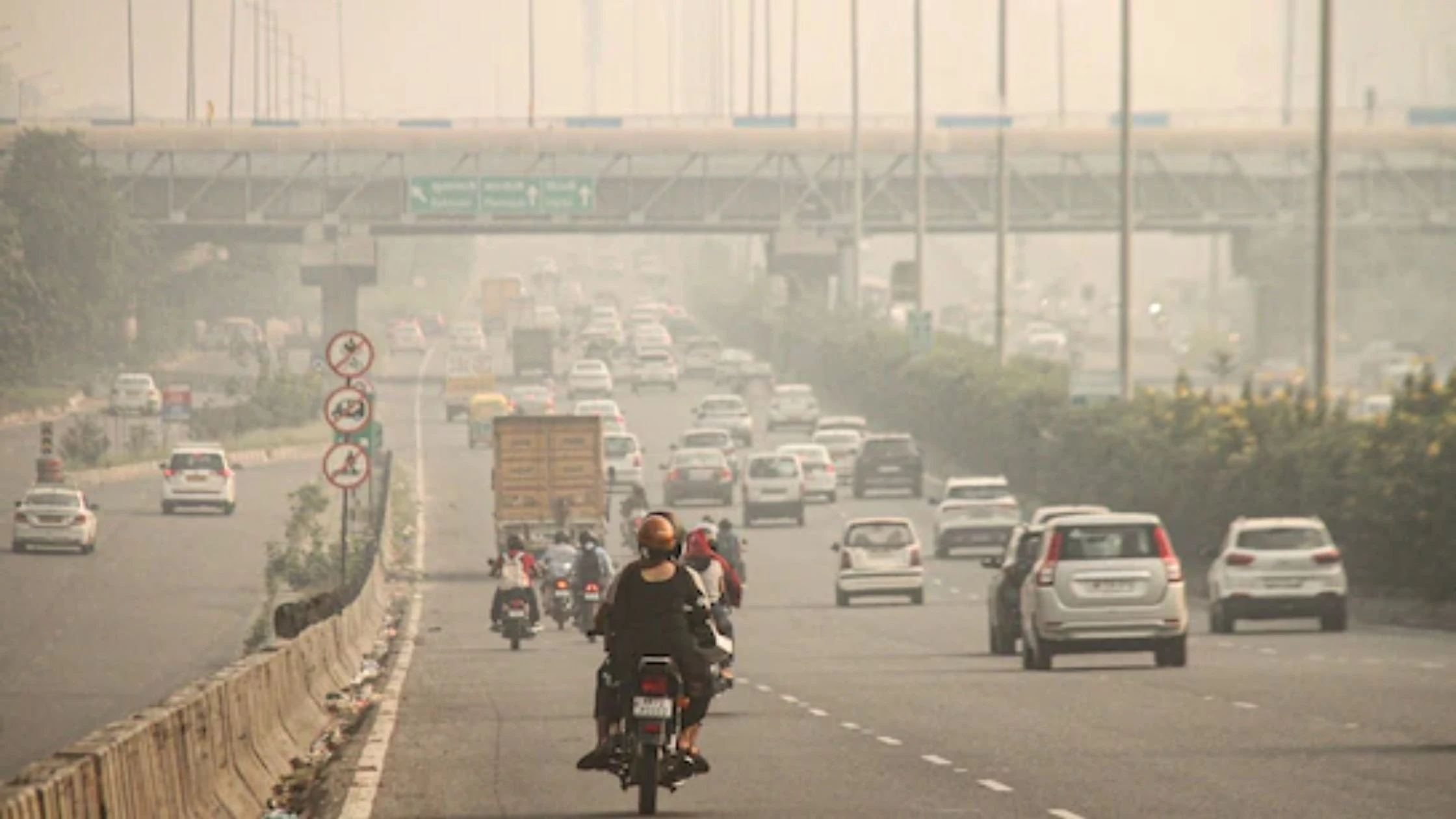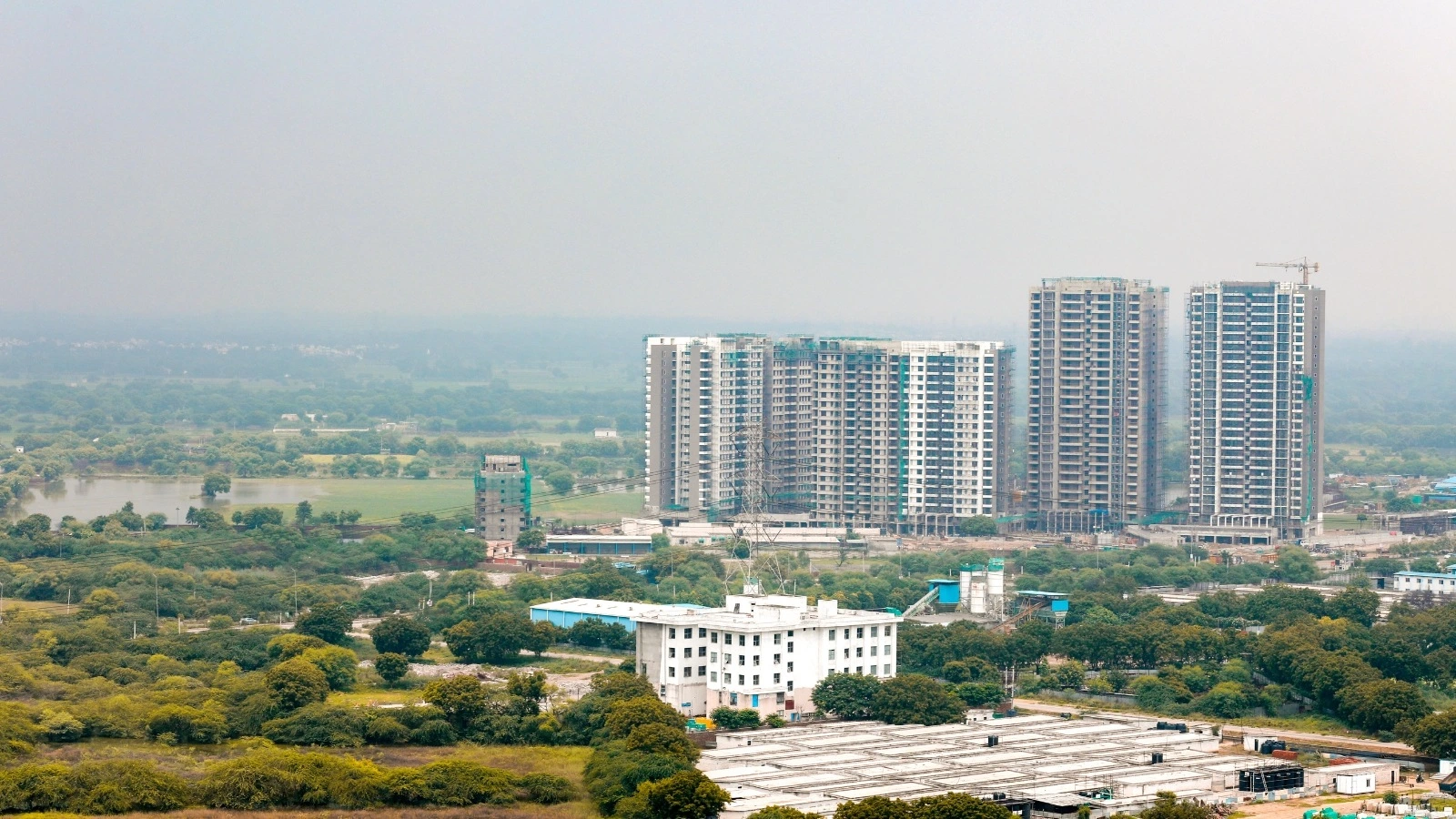Table of Content
- Why Do Walls Crack?
- Types of Cracks
- Why is Wall Crack Repair Important?
- Tools and Materials Needed
- Step-by-Step Repair Process
- DIY Wall Repair Options
- Tentative Wall Crack Repair Cost in India
- Preventive Measures to Avoid Future Wall Cracks
- When to Call a Professional
- Hide Cracks with Home Decor
- Conclusion
Maintaining flawless walls is crucial for both the beauty and structural safety of your home. Over time, walls can develop cracks and holes due to settling, moisture, temperature changes, or construction flaws. Recognizing the types of wall damage and knowing the proper techniques to repair cracks and holes in internal walls is essential for preventing further deterioration. Whether it’s a minor hairline crack or a larger gap, using the best wall filler for cracks, patching wall holes, and applying proper plaster or joint compounds ensures your walls remain strong, smooth, and visually appealing. Timely intervention not only preserves the aesthetics of your home but also protects it from moisture, pests, and long-term structural issues.
Why Do Walls Crack?
Walls crack due to natural movements and external factors:
- Temperature changes: Walls expand and contract with significant temperature fluctuations.
- Uneven ground settlement: Soft or uneven soil can create pressure on walls.
- Poor construction: Weak materials or insufficient curing can lead to cracks under stress.
Understanding these causes helps homeowners take preventive measures and choose the right repair method to repair cracks and holes in internal walls effectively
Also Read: Top 8 Kitchen Sink Brands in India (2025): A Complete Buyer's Guide
Types of Cracks
Identifying the type of crack is essential before attempting any repair. Here’s a detailed look at the different cracks, their causes, and characteristics.
Hairline Cracks

Hairline cracks are very thin cracks, usually less than 1/16 inch. They are often superficial and mainly cosmetic. Hairline cracks generally do not indicate structural issues but should still be addressed to maintain wall's appearance.
Characteristics and Causes:
- Very thin and shallow
- Often caused by minor settling or natural expansion
- It can appear due to material contraction or the aging of the building
Structural Cracks
.jpg)
Structural cracks are deeper, wider, and can indicate serious foundation problems. They may appear in intersecting patterns or show bulging and separation of materials.
Characteristics and Causes:
- Wide or deep cracks
- May indicate foundation settlement or structural movement
- Require immediate professional evaluation
Expansion Cracks
.webp)
Expansion cracks occur when materials, particularly concrete, expand due to temperature changes and have no room to move. Over time, these cracks can worsen and allow water ingress.
Characteristics and Causes:
- Often horizontal or vertical along walls
- Caused by a lack of expansion joints
- It can worsen in areas with extreme temperature swings
Shrinkage Cracks

Shrinkage cracks are common in new constructions. As poured concrete or plaster dries, it loses moisture and can develop small cracks.
Characteristics and Causes:
- Usually vertical and narrow
- Occur in the first year of construction
- Often cosmetic but may need monitoring
Settlement Cracks
.webp)
Settlement cracks are often found in older homes as the structure settles into the foundation. They may run diagonally and require careful assessment.
Characteristics and Causes:
- Diagonal or stair-step pattern
- Develop over time due to foundation movement
- May indicate uneven soil or structural stress
Why is Wall Crack Repair Important?
- Prevents minor cracks from becoming major structural problems
- Maintains home aesthetics and cleanliness
- Protects against moisture, mold, and pests
- Preserves structural integrity and longevity
Early action to repair cracks and holes in internal walls saves both money and effort.
Tools and Materials Needed
Proper tools and materials ensure successful repair:
Tools:
- Putty knife
- Wall seal or wall filler
- Sandpaper
- Hammer and chisel
- Paintbrush
- Caulking gun
- Fiberglass mesh patch
Materials:
- Drop cloths and rags
- Utility knife or scraper
- Cleaning solution
- Joint compound
- Primer and paint
Also Read: Primer Paint: Types, Applications, Advantages & Disadvantages
Safety Gear:
- Dust mask
- Safety glasses
- Gloves
Step-by-Step Repair Process
Follow these steps carefully to effectively repair cracks and holes in internal walls. Each step ensures a durable, smooth, and visually appealing finish, making your walls look as good as new.
Step 1: Routing of Cracks
The first step in repairing wall cracks is proper cleaning. Remove any loose debris, dust, or crumbling plaster using a scraper or utility knife. For wider cracks, create a V-shaped groove along the crack using a masonry chisel or crack-chasing saw. This groove allows the filler to adhere better and ensures that the crack is fully sealed, preventing it from reopening later. Proper routing is a key step in any project to repair cracks and holes in internal walls.
Step 2: Filling Up the Crack
Once the crack is prepared, fill it using a wall seal or filler. Apply the filler generously to ensure that the gap is filled. Use a putty knife to press the filler firmly into the crack and smooth it out to match the surrounding wall surface. This step is critical for creating a strong bond and providing a solid base for subsequent finishing layers.
Step 3: Layer Addition for Larger Holes
For larger holes or deeper cracks, single-layer filling is not enough. Prep the hole by cleaning out any loose material and lightly moistening the area with water. Apply the wall filler in multiple criss-cross layers, allowing each layer to dry completely before adding the next. This technique strengthens the repair, ensures a uniform surface, and prevents sagging or shrinkage over time.
Step 4: Sanding of the Surface
After the filler has dried completely, sand the repaired area using fine-grit sandpaper. Sanding smooths out any uneven surfaces, removes excess filler, and blends the repair seamlessly with the surrounding wall. Proper sanding is essential to achieve a professional-looking finish and ensure that the wall is ready for priming and painting.
Step 5: Painting
The final step is to restore the wall’s appearance with paint. Apply a layer of primer over the repaired area to seal the filler and enhance paint adhesion. Once the primer is dry, finish with your chosen paint color to match the existing wall. A careful application of paint ensures that the repair is virtually invisible, leaving a flawless, polished look.
DIY Wall Repair Options
Temporary fixes until professional help is available:
- Soap (for hairline cracks)
- Rub a bar of white soap along the crack
- Buff off excess residue
- Toothpaste (for tiny cracks)
- Apply white toothpaste and smooth with a damp cloth
- Baking Soda & Glue Mixture (for slightly wider cracks)
- Mix baking soda with white glue to form a paste
- Apply with a putty knife, dry, then sand
These methods are temporary, permanent repair cracks and holes in internal walls using wall filler is recommended.
Tentative Wall Crack Repair Cost in India
|
Type of Crack |
Estimated Cost |
Typical Work Included |
|
Hairline cracks |
₹20–₹40 per running foot |
Cleaning, filler, repainting |
|
Medium cracks |
₹60–₹120 per sq ft |
Crack cutting, filler, replastering, and painting |
|
Structural cracks |
₹300+ per sq ft |
Grouting, reinforcement, plaster repair |
Costs vary based on damage, local labor, and materials. Consult a licensed contractor.
Preventive Measures to Avoid Future Wall Cracks
- Ensure waterproofing, especially in bathrooms and terraces
- Use high-quality cement and sand
- Proper curing of plaster and concrete
- Install expansion joints in long walls
- Maintain proper drainage around the foundation
- Inspect the home before and after the monsoon
Also Read: Types of Flooring Materials in India: Cost & Guide for Every Home
When to Call a Professional
Seek professional help if:
- Crack width > 5 mm
- Diagonal or multi-wall cracks
- Misaligned doors/windows
- Uneven flooring or bulging walls
Qualified contractors can distinguish cosmetic cracks from structural issues and recommend repairing drywall cracks or more extensive fixes.
Hide Cracks with Home Decor
If the cracks in your walls are minor and don’t require structural repair, you can conceal them creatively using home decor. These solutions not only hide imperfections but also enhance the aesthetic appeal of your space:
- Frames: Place photo frames or artwork over the cracks. This method instantly covers imperfections while adding a personal and stylish touch to your walls.
- Wallpaper: Use patterned or textured wallpaper to disguise cracks effectively. The design draws attention away from the wall’s flaws while refreshing the room’s overall look.
- Tapestry: Decorative wall tapestries, such as mandala or artistic fabric hangings, can hide cracks completely. They also add color, texture, and a boho-chic vibe to your interiors.
- Mirrors: Position decorative mirrors on walls with visible cracks. Mirrors reflect light and divert attention, creating a focal point that naturally conceals wall imperfections.
- Bookshelves or Plants: Strategically place tall bookshelves, cabinets, or indoor plants against the cracked wall. This not only hides the cracks but also adds functional or green elements to your room’s decor.
Conclusion
Timely action to repair cracks and holes in internal walls not only enhances your home’s appearance but also protects its structural integrity. By identifying the type of crack, using the right materials, and knowing when to DIY or call a professional, you can prevent minor issues from turning into costly repairs.
Regular maintenance and smart wall repair practices ensure your home stays safe, strong, and beautiful for years to come. Investing effort in repair cracks and holes in internal walls today saves money, stress, and preserves your property’s value.











Ans 1. Generally, you'll need spackle or joint compound, a putty knife, sandpaper, a damp cloth, and primer/paint.
Ans 2. Clean the area around the crack or hole, removing any loose debris or old paint. Lightly sand the edges for better adhesion.
Ans 3. Drying time varies, but typically it takes 1-3 hours. Check the product label for specific instructions.
Ans 4. Yes, priming ensures proper paint adhesion and a uniform finish. Use a suitable primer for your wall type.
Ans 5. Large or recurring cracks may indicate a structural issue. Consult a professional for assessment and repair.